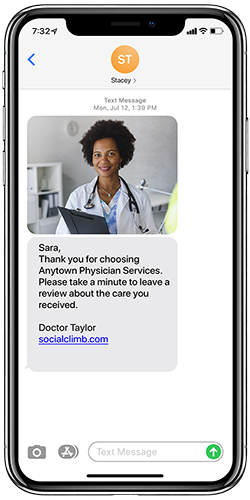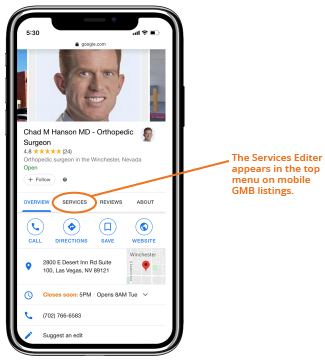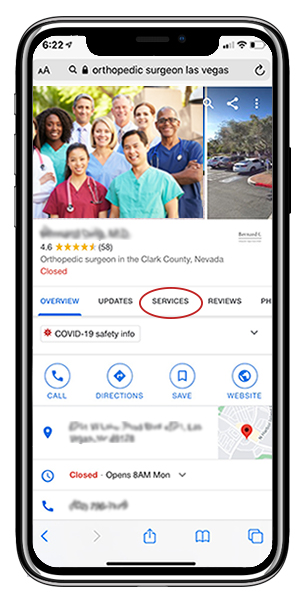Are you taking the right steps to attract new patients to your medical practice?
Do you need to attract new patients? If so, you’re not alone. My daughter’s doctor just informed her that she will be closing her practice. Covid-19 made it impossible for the 2-physician practice to survive, so the good doctor is looking for a new place to hang her shingle.
The pandemic is not the only difficulty you’re facing, though. Even before Covid-19, data collection requirements, declining revenue from private insurance, government regulations, and billing and collections woes have made it difficult for many private practices and hospitals to stay afloat.
Attracting the right patients can tip the scale in your favor so you can grow your practice and weather the storm.
Online Reputation Basics
You need to attract new patients, and they need to be the right patients if you want to maintain your independence. To do that, you need to be visible where patients are searching for medical care—online. Consumers turn to online search to find the help they need, and medical consumers are no different. In 2019 90% of consumers used the internet to find a business, according to a BrightLocal survey. And when patients search online for a doctor, 94% of them read reviews to help them make their decision.
1. Get your reputation in shape.
When it comes to your online reputation, don’t be a couch potato. Your reputation is not going to take care of itself. You need to go online (let’s get real, your staff can go online for you) and give your reputation a checkup. Take a look at your star rating on the top 5 patient review sites for doctors: Google, Healthgrades, Facebook, Vitals, and RateMDs.
If you don’t have a star rating that accurately reflects the level of care you provide and the satisfaction level of your patients, you’re not alone. You can be sure that if one of your patients is unhappy with an outcome, or even if they had a negative experience with the front desk, you’ll hear about it online. Luckily, you can take steps to improve your rating so it’s more accurate (spoiler alert—it has to do with asking for reviews).
Patients are reading reviews as a first step in establishing trust with a doctor. So while you’re checking out your reputation, make sure you have a decent number of current reviews.
Don’t have enough reviews? Keep reading.
2. Ask nicely for reviews.

We have found that when patients receive a text from their doctor asking for a review, about 10% will respond and leave their feedback. That means you’ll build your number of reviews pretty quickly. And most doctors receive a bump in their rating once those reviews start piling up.
If you don’t ask for reviews, and leave it to your patients’ whims, you’re putting your reputation at risk. People leave reviews when they feel strongly about something, and both negative and positive emotions will trigger that desire. (It sure seems like angry people are more motivated than happy people, though.)
Asking for reviews is a great way to attract new patients because it builds your online reputation so prospective new patients can get a feel for who you are. So get those review requests started, and watch for a rise in your star rating as a nice benefit.
3. Respond to your patients.
You know that excellent bedside manner you have? Your prospective patients have no idea.
Once you get your patients leaving reviews, make sure someone on your staff is responding to them. Of course, your responses need to be HIPAA compliant, but respond to those reviews to let people see that you care.
Don’t hide your concern for your patients and their well being away where no one can see it. Let the public see what’s behind the mask: a fantastic doctor they can trust their lives with.
4. Especially the angry ones.
You’re going to get negative reviews. The goal here is to receive more positive reviews than negative.
However, when you do get a negative review, you should respond. Look at the feedback as an opportunity to show your current patient that you take their concerns seriously. At the same time, you can alleviate the unspoken fears of potential patients with your response.
Read more tips on how to respond to negative reviews.
5. Check all the boxes for your GMB listing.
Managing your online reputation means more than just making sure you look good on Google, but let’s be clear: Google controls a disproportionately large portion of online search results. At least for now.
Google My Business (GMB) listings are featured 93% of the time for local online searches. That’s a lot of real estate. You need to claim and optimize your GMB listing, checking all the boxes to make sure Google puts your listing in the top three search results.
When people search online for medical care, and your GMB listing pops up, many of them won’t even realize they are not on your website. You need to make sure they get all the information they need easily.
You can read more about how to claim and optimize your GMB listing. Basically, what I’m talking about is that you need to own your Google listing so random people can’t come in and put in false info (yes, it’s happened before). You also need to make sure the listing has all the elements Google is looking for: current reviews, address, hours, proper category selected, photos, etc.
Optimizing your GMB page is essential if you want to attract new patients in today’s digital environment.
6. Get the word out about your services.
If you’re working on optimizing your GMB listing, you’re on the right track. When people search online for medical care, and your GMB listing pops up, you need to make sure they get all the information they need easily. A couple of specific elements will give you an edge with Google and your prospective patients:
- Update your Covid-19 response so patients know what to expect.
- Include Google Posts with announcements and other information.
- List the services you offer on your listing’s services tab.
You need to get seen to attract new patients, and when they come searching online for medical care, they need to see what you have to offer.
Diving Deeper
If you’ve got a well-managed reputation that accurately reflects your excellent level of care, you’re ready to dive deeper. That means identifying who and where your ideal patients are so you can target them with your marketing efforts and make the most of your spend.
7. Know who your patients are.
Have your staff go through your records to find who your patients are including their age, gender, type of insurance, and profession. Pay attention to high-value patients specifically to make note of what characteristics they have in common. You need to know your patient base if you want to attract new patients with similar profiles with your marketing.
And if who you ARE seeing does not line up with who you WANT to be seeing, some well-thought-out targeted marketing can fix that.
8. Put predictive analytics to work for you.
For years, hospital systems have used big data and predictive analytics to identify their target audience and where they live. That information is now available to doctors in private practice as well.
Data is collected on internet users when they search for information online. You’ve seen results of this data collection when an ad pops up for exactly what you’ve been searching for. Sometimes it even feels like the internet can listen in on your conversations! But what you’re actually seeing is the data plugged into algorithms that have targeted you effectively.
The same thing can be done in the healthcare sector. People at high risk for specific medical conditions can be identified using big data. You can see zip code areas where high concentrations of these at-risk individuals live and focus your marketing efforts there.
If you want to attract more patients in need of knee replacement or shoulder surgery, for example, you can identify potential patients at risk for those specific conditions. You can even filter for financial information and type of medical coverage. Predictive analytics lets you identify the patients you want so you can target them with your marketing efforts.
9. Get seen by the patients you want.
Once you’ve identified your ideal patients, you can send ads via Google, Facebook, and Instagram targeted specifically to those at-risk individuals. The key is in properly configuring your ads to make sure they are seen when your target patients search for care.
The ads need to be set up with the proper keywords, negative keywords, copy, and structure to reach your targeted patients. When they search for care in their area, your ad will pop up at the top of their list and get seen right in their decision making moments.
Attracting high-value patients with medical conditions you want to specialize in will help you capture the profitable market share of patients and build your practice quickly.
10. Plan, track, measure, repeat.
 Don’t let anyone tell you it’s impossible to accurately measure the value of your marketing spend. With predictive analytics and targeted ads in your arsenal, you can attract new patients and measure the outcome with confidence.
Don’t let anyone tell you it’s impossible to accurately measure the value of your marketing spend. With predictive analytics and targeted ads in your arsenal, you can attract new patients and measure the outcome with confidence.
The key measurement here is the number of appointments made from your marketing efforts. For example, if you set up a targeted Google ad, you can track the calls that come in from the ad. And when any of those calls result in a scheduled appointment, you’ll know the ad was responsible for the revenue brought in by that patient.
Your patient acquisition cost is very simple: divide the money you spend on the ad by the number of appointments that were made from the ad. So if you spend $1000 on Google ads for a month and schedule 25 appointments from the ad, your patient acquisition cost is $40. With that number in hand, you can easily see if the marketing effort is worth the spend and alter your strategy accordingly.
The next metric you want to calculate is your return on investment. For this you’ll need to know the value each patient brings in. You can use the actual value or an average value.
Let’s say the average value of each of your patients is around $900. For those 25 patients you brought in, your revenue would be $22,500. Your ROI is calculated by subtracting your marketing spend from your revenue ($22,500 – $1,000 = 21,500) and dividing that by your marketing spend (21,500 / $1,000 = 21.5). Then you multiply by 100 (21.5 x 100 = 2,150%). For these numbers, the ROI on your Google ads for the month would be 2,150%.
Wow.
The technology is in place to accurately measure the value of your marketing spend so you can use your marketing dollars to their best value and grow your business with high-value patients.
Start Today
Take steps today to take charge of your reputation and leverage it to bring in the patients you want. You can attract new patients with little effort if you play your cards right and use the tools available to you.
If you need help getting started with your reputation management, or if you’re ready to move to the next level, give one of our team members a call at 866-338-8270, or set up a demo today.













